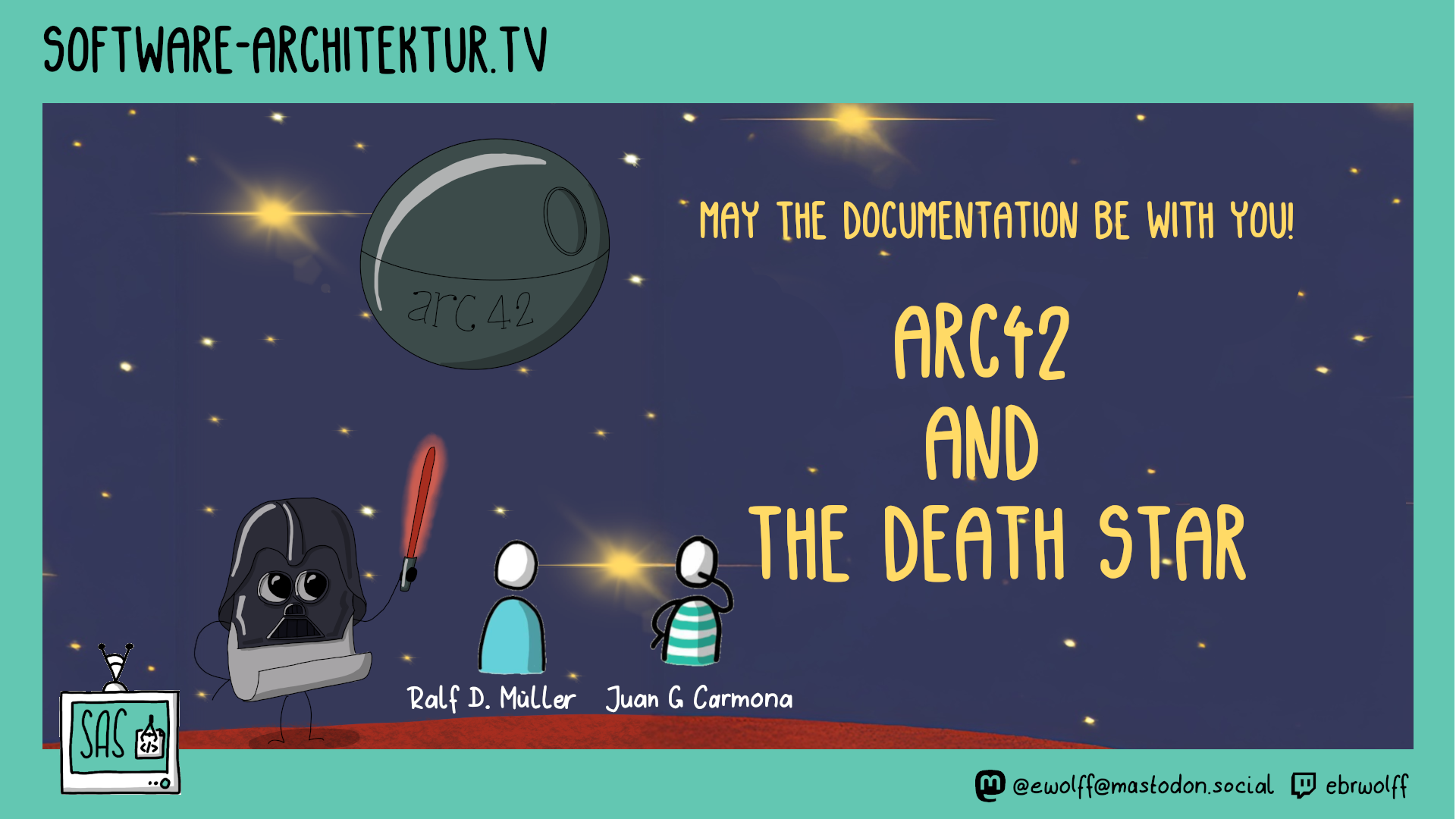“Fear will keep the local systems in line… fear of this battle station!” - Grand Moff Tarkin
In this session, we’ll examine the most iconic space fortress in film history through Juan’s complete arc42 documentation. This creative Star Wars project becomes an educational journey through the arc42 template - exploring how fictional architectures can teach us real lessons about software documentation.
What to expect:
- A practical arc42 walkthrough: Exploring how Juan applied the arc42 template to document the Death Star’s architecture. We’ll walk through the key chapters and see how each section contributes to understanding this complex system.
- Architectural decisions that made history: What can we learn from the Empire’s architectural choices? How does documenting fictional systems help us understand real-world architecture decisions?
- 20 Years of arc42: The template celebrates its 20th anniversary in 2025. We’ll explore why arc42 has remained relevant and how creative examples like this help teach architecture documentation.
- Lessons learned from creative documentation: What can we learn when we apply serious architecture practices to fictional systems? How does this approach help both newcomers and experienced architects understand documentation principles?
Using Juan’s arc42 documentation of the Death Star (available on GitHub in English and Spanish), we’ll explore how structured documentation works in practice - and why good documentation matters whether you’re building software or a space station.
Target audience: Software architects, arc42 users, Star Wars fans, and anyone who wants to learn how to document architectures so that even after 20 years, someone still understands why certain decisions were made.
“Remember… the documentation will be with you, always.”
Links
Tags: English Dokumentation2025-07-11 Thumbnail
PeerTube Video - no Big Tech!
Peertube-Video von tchncs.de eingebettet anzeigen DatenschutzerklärungVideo bei tchncs.de
YouTube Video
YouTube-Video eingebettet anzeigen DatenschutzerklärungVideo bei YouTube
Podcast
This is the audio as a podcast.MP3 Download
Information and feeds for the Podcast
